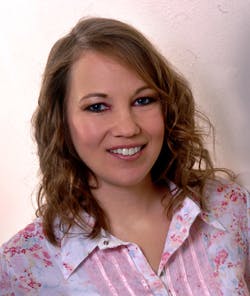Seven Tips to a Better Relationship with the Photojournalist
They brave a blizzard on foot when cars can’t make it through. They spend hours working outside when it’s 10 below with 25 mph winds or 101 with no shade in sight. They are at four-alarm fires and 2 a.m. stand-offs, as well as those parades, sports events or other happenings in your community.
The job of the photojournalist is to capture an event on film so their readers can see and feel what it was like to be there and that puts them in a variety of situations every day.
One of my favorite Mark Twain quotes is, “The different between the right word and the almost right word is the difference between lightning and a lightning bug.” The same concept can apply to a good picture and a great picture. Most of us can take a good picture, but with the knowledge of light and composition and the right equipment, photojournalists have the expertise to capture that great picture.
Talking to a few of the former photographers from the local paper in my area, there are a number of things to keep in mind when working with your local photojournalists to ensure you have a strong working relationship.
1. “My Photographer”
They are out and about in their community everyday and work at developing good relationships with the people at various organizations. But, because they work to be accommodating, it doesn’t mean they’re your photographer. Being called “my photographer” by a PR person or hearing, “They come when ever I call them,” topped their list. They are out looking for news and they or their editor thought your event was newsworthy. Be appreciative, not presumptuous.
2. Staged Photos
Being given direction to do their job is a quick way to tarnish the relationship. They’re not there to get out the message you want out; they’re there to take pictures of what they see as newsworthy for their readers. As a journalist documenting an event, staging a photo is like fabricating a story.
3. Blockers
They are journalists, so they will want to talk to the subject. PR people that block the contact or act as bodyguards just make it that much more difficult for them to do their job. Expect that they will talk to and interact with the subject.
4. Timing
They are logging many miles in a day to hit many jobs, not just covering your event. Giving them the wrong time so they’re standing around wastes their time and sometimes means they may have to leave before they can get a shot … something they won’t quickly forget.
5. Timing — Part II
Conversely, not giving them enough time can be just as detrimental. They’re considering the background, the lighting, the equipment they have … remember, they want a great shot, not a good shot. Often they will experiment with a couple of things to ensure they get the best picture possible. Giving them 10 minutes to get a picture will not make them happy and will not produce the results they are capable of.
6. Final Call
No, it’s not going to be up to you which image they will use or which image they won’t. In fact, it’s not always even up to them. This is their job, they are the professional; they will pick the best photo(s) to tell the story. However, with breaking news or page layout changes, last-minute changes do occur.
7. Copies
They are getting paid by their media outlet. The pictures they shoot are owned by that media outlet. Don’t expect that they can just give you copies of the photos they shoot. Most media sources will sell reprints.
